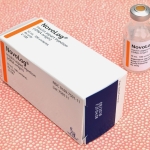It starts with a tickle in your throat. Then comes the sneezing. Then—WHAM—you’re full-blown sick. And just when you think your only problem is using half a box of tissues in five minutes, your CGM decides to throw a party. A high alarm party. At 3:00 AM. Because of course.

Welcome to the glamorous world of being sick with diabetes. Where the cold virus isn’t just annoying—it’s an undercover agent hired by your endocrine system to throw your blood sugars into chaos.
The Great Blood Sugar Betrayal
You see, when you catch a cold or the flu, your body goes into full DEFCON mode. Stress hormones like cortisol and adrenaline flood your system, not to help you get better per se—but to mess with your insulin sensitivity and liver. Your liver, being the overly enthusiastic organ it is, decides, “Ah, we’re under attack! Let’s help!” and dumps glucose into your bloodstream like it’s Black Friday and sugar’s on sale.
For people on multiple daily injections (MDI), this means your usual basal/bolus routine might suddenly feel like bringing a water pistol to a wildfire. Even if you’re not eating because everything tastes like cardboard soup, your sugars may still be high because your body is doing its own thing—and by “thing,” we mean sabotaging your good intentions.
If you’re using a sensor-augmented insulin pump, you get the added joy of watching the high numbers in real time, along with bonus alerts every time your blood sugar looks at the 200s (or higher). “BZZZ. Hey, buddy. You’re high again.” Yes, pump. We know. You don’t have to keep yelling.
What To Do When You’re Sick and Spiky
So how do you fight back? Well, first of all, don’t panic. (Unless you’re out of coffee and tissues, in which case, panic responsibly.)
Here’s your sick-day survival guide, MDI and pump edition:
1. Check BGs More Often Than You Check Your Streaming Queue
Even if you’re on a CGM, do some finger sticks if needed. Illness can cause dehydration, compression lows, or sensor inaccuracy. Monitor frequently so you can stay ahead of trends, not behind them. (Your future self will thank you. Probably.)
2. Adjust Insulin Like a Boss

- On MDI? You might need to increase your long-acting insulin slightly, but do this with your healthcare team’s input. You’ll also likely need more correction insulin—even if you’re barely eating.
- On a pump? Use a temporary basal rate increase (start with 20–30% and titrate as needed), or set up a sick-day profile if your pump allows it. That flu bug might be annoying, but it will back down with enough insulin reinforcements.
3. Eat What You Can, Dose What You Must
If you’re eating less, dosing can feel like a math test while dizzy. Aim for small, bland, carb-friendly meals. Think applesauce, toast, broth… or that one soup that’s been in your pantry since 2019. (Yes, now’s its moment.)
4. Hydrate Like You’re Training for a Pee Marathon

High sugars = dehydration = even higher sugars. It’s the Circle of Strife. Keep water, broth, electrolyte drinks (low sugar!), and, if necessary, popsicles handy. If you’re peeing less or feeling dizzy, that’s your cue to up the fluids—or call your doc.
5. Check Ketones, Especially if You’re on MDI
Flu + insulin resistance = ketone party. You don’t want an invite. If your sugars are high and you’re not eating, check your ketones. If they’re moderate or high, call your healthcare team, or go to urgent care if needed. No shame in being proactive. Hospitals have great Jell-O.
6. Have a Sick-Day Plan Ready—Before You’re Too Miserable to Care
Talk to your diabetes team before you get sick. Have a clear plan for when to adjust insulin, when to check ketones, and when to call for help. Because when your brain feels like soup, it’s not the best time to calculate insulin-to-carb ratios.
The Moral of the Story
Illness happens. And when it does, blood sugars like to go rogue. But with vigilance, hydration, some insulin tweaks, and a sense of humor (even if feverish), you can ride the wave and come out the other side in one piece—maybe even with a funny story to share.
Because let’s face it: if diabetes wants to throw curveballs, we’ll just grab a bat and hit back—with insulin, fluids, and a well-timed sarcastic remark.

